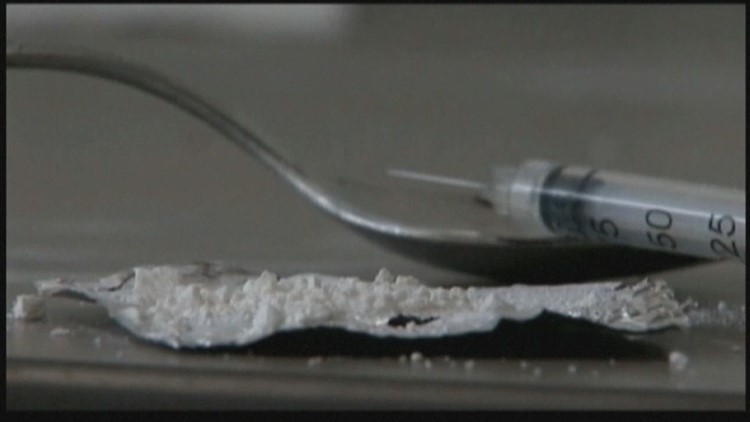VERIFY – YOU’VE GOT QUESTIONS, WE’LL FIND ANSWERS
A 9NEWS project to make sure what you’ve heard is true, accurate, verified. Want us to verify something for you? Email verify@9news.com
THE QUESTION
A story about an Ohio police officer nearly dying after touching fentanyl got us wondering about the drug’s safety.
East Liverpool patrolman Chris Green stopped a suspicious car and found two people inside trying to rub a white powder into the car’s carpet, according to NBC News.
Green apparently got some of the powder on his shirt while searching the car and the suspects. He brushed it off with his bare hands and passed out an hour later.
The white powder was a powerful opioid called fentanyl. When Green collapsed at the station, NBC reported that he needed four doses of the opioid antidote Narcan to revive him.
People who overdose on heroin typically need one dose, so we wondered: How dangerous is fentanyl?
WHAT WE FOUND
For answers, we turned to the U.S. Centers for Disease Control, the Lakewood Police Department and Chris Hoyt, a professor of emergency medicine at the University of Colorado hospital.
Fentanyl is pain killer that’s about 100 times more potent than morphine, Hoyt said. It’s often used as a pain reliever during surgery or for terminally ill patients.
In its powder form one milligram -- a grain about the size of a single piece of sea salt -- is enough to cause an overdose.
“Even in the hospital, we monitor people very closely when we give them this drug because taking too much of it can make someone stop breathing,” Hoyt said.
That’s why powdered fentanyl is dangerous when law enforcement and first responders encounter it.
Fentanyl granules can be absorbed through the skin or breathed in through the lungs, Hoyt said.
He suspects Officer Green inhaled fentanyl granules while searching the car and/or the two people inside.
You can absorb it through contact with your skin, but the severity of the overdose made Hoyt suspect Green inhaled it.
So, why did it take four doses of the antidote to revive Green?
Fentanyl bonds tightly to the protein in your body that gives the drug its effect, Hoyt said.
A single dose of Narcan often dislodges heroin from that protein, but “fentanyl, unfortunately, often binds so tightly that we sometimes have to give multiple doses of Narcan to reverse the effects,” Hoyt said.
This isn’t the first time fentanyl has made a first responder sick.
The CDC cites a 2015 case of New Jersey officers experiencing “respiratory distress” after coming into contact with a mixture of cocaine, heroin and fentanyl.
It’s one of the reasons the agency calls the drug “a significant danger to public health workers, first responders and law enforcement personnel that may unwittingly come into contact with it.”
The case in New Jersey isn’t an isolated incident. People are mixing fentanyl with heroin and other drugs – increasing the likelihood of accidental overdose.
“There’s a new seriousness, I think, in the potency of some of these drugs that we’re seeing on the streets now,” Lakewood Police spokesman Steve Davis said.
Lakewood is training its officers to wear masks and gloves during searches to prevent accidental overdoses.
But the average person on the street shouldn’t worry about overdosing if they pass or touch someone with fentanyl on his or her clothes.
“If you just happen to walk by them, it’s very, very, very unlikely that you’re going to get sick that way,” Hoyt said. The confined space of the car is what Hoyt thinks likely lead to the Ohio officer's overdose.



